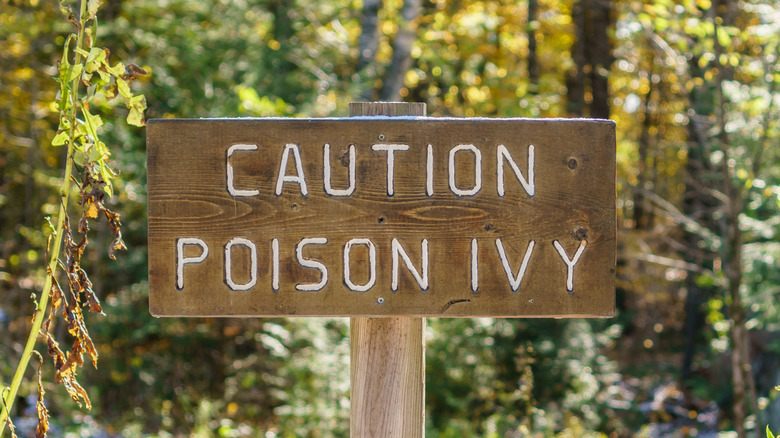Travel Guides Outdoor Adventures
Juvy Garcia
You’ve probably heard the stories. Perhaps you have one to share yourself. In most cases, the itch sneaks up unexpectedly and ruins what was to be a great outdoor adventure or a refreshing vacation in the wild. Poison ivy is the bane of hikers and campers nationwide.
Toxicodendron radicans, as it is known scientifically, causes allergic reactions in around 85% of the U.S. population, afflicting 50 million people in the country annually, according to the American Skin Association. While we blame the leaves, the culprit is actually the oil urushiol that causes the rashes. The itching ensues when this oil touches our skin, whether we got exposed to it through the plant’s leaves or our pet’s fur, clothing, or other items that have come into contact with poison ivy.
While many associate the terrors of poison ivy with summer, it’s a potential hazard all throughout the year. You’ll find poison ivy in most states, growing in fields and forests, along streams and in wetlands, along roads and trails, and even in city parks or your own backyard. Doesn’t look like you can easily escape it, but there are a few simple ways to enjoy nature without the sting and blisters.
Get schooled on spotting poison ivy

Heidi Besen/Shutterstock
Prevention is better than cure. And, when it comes to poison ivy, the best thing to do is to avoid it altogether. “Leaves of three, let them be” is a common adage worth remembering when you’re hiking the trails or camping in the wilderness. While a cluster of three leaves is a typical trait of poison ivy — along with alternating leaves and the absence of thorns — the physical variations within the species are enough to make you question whether or not a plant is poison ivy.
“Poison ivy has a lot of structural diversity: I’ve seen a free-standing poison ivy plant with three-inch leaflets growing right next to a climbing poison ivy plant with six-inch leaflets. They may look different, but they are the same species,” botanist Susan Pell, executive director of U.S. Botanic Garden, told the Smithsonian Institution. “Its morphological characteristics are very diverse and change in different habitats.”
Furthermore, poison ivy changes its leaves with the season too. In spring, its leaves are red with green flower buds, before turning into a green sheen with small whitish berries in the summer. With fall comes leaves of vivid yellow, orange, and red before they turn a deep red in the winter. Eventually, the leaves fall, leaving white berries and exposing the roots that may be hairy or bare, but are still poisonous. You can download the iNaturalist app on Apple and Android devices to help you identify suspected poison ivy plants you encounter during your hike or while camping.
Protect yourself from poison ivy

Maridav/Shutterstock
Because poison ivy can be difficult to identify, avoid touching plants or letting your clothing and other items come into contact with what you suspect to be a member of the species. Another barrier you can add between you and the plant is to protect yourself from exposure to it. You can do this in several ways. First, you’ll need to cover up whenever you go outside for a walk. Wear long sleeves, long pants, and closed shoes or boots. Add vinyl gloves, and tuck in your shirt in your pants and your pants into your socks or boots.
Next, apply ivy blockers on your hands and extremities for an added layer of protection. These creams work by preventing your skin from touching urushiol. Smother them on these potentially exposed areas 15 minutes before heading out. Pack a bottle or tube in your backpack and reapply according to package instructions.
Then once your hike is done, take off your clothes and shower in lukewarm water. You should also wash your clothes separately and all other items you used outside. Cleaning your camping or hiking gear, for instance, is key to not getting surprise rashes the next time you pick them up. Urushiol is notorious for staying on exposed surfaces for months or even years. If you brought pets during your hike or camping trip, make sure to wash their fur thoroughly too. While pets won’t get allergic reactions, you will, so use gloves to avoid potential exposure to poison ivy oil.

